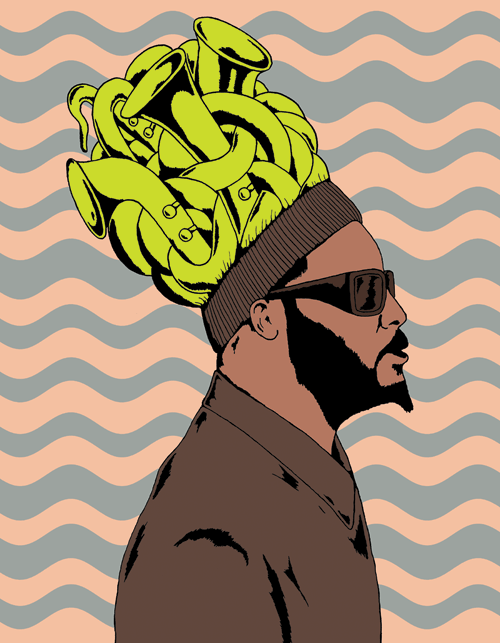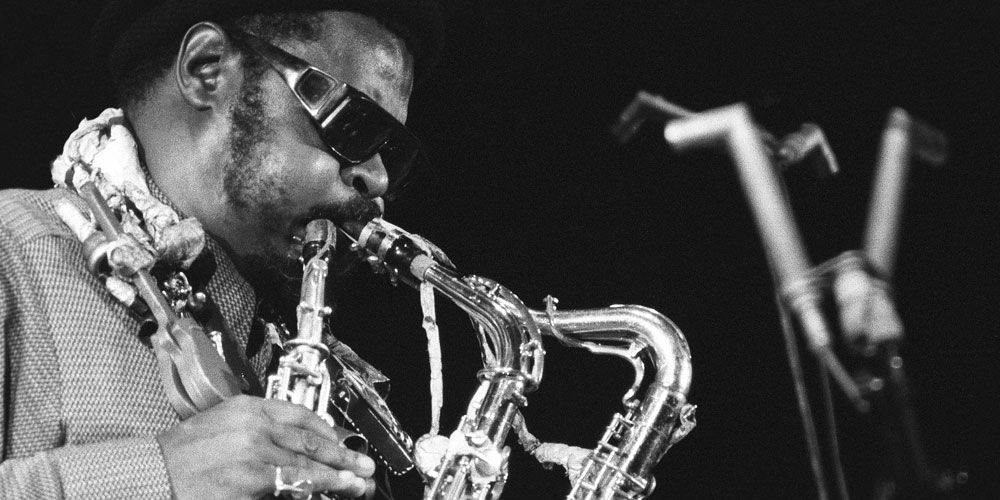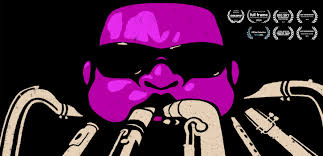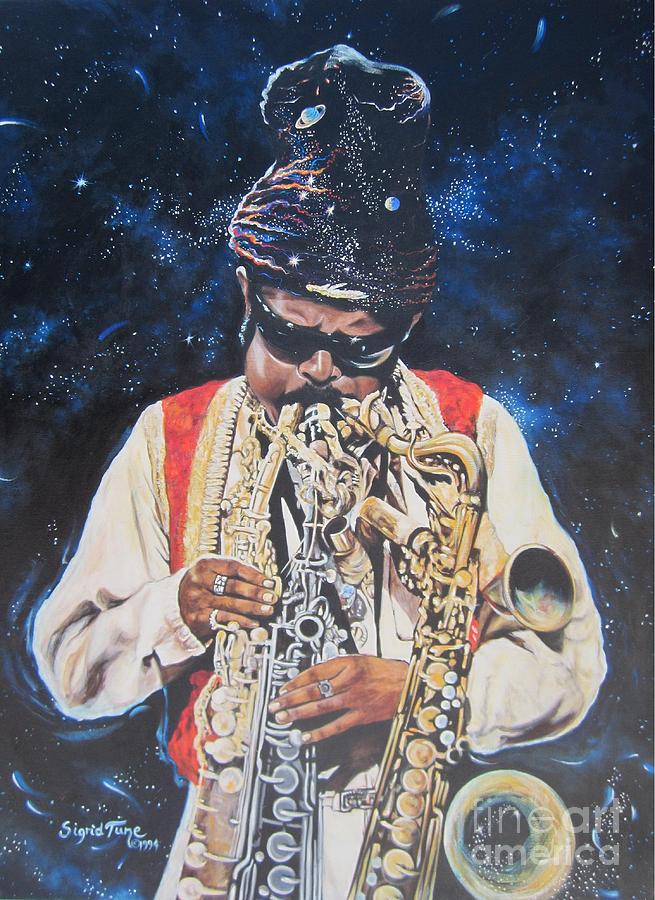
Dour seems a fitting description of Chicago’s cultural scene these days. More and more theatrical productions are postponing performances. Museums are open but there a few new exhibitions. With Gregory Porter cancelling his big show at the Chicago Theater earlier this month, musical options lean toward smaller venues where the city’s army of excellent musicians knit together much needed gigs. Desperation has found us looking for the exceptional in all kinds of unexpected places, including the neighborhood library.
The Case of the Three Sided Dream, a chance stab in the dark couldn’t have been a more welcome find. A movie in DVD form, everything about it is strange and wonderful. Strange because people don’t usually make films about musicians who play jazz and wonderful because it was a close-up view on what genius can look, act and sound like.
Ask anyone who listens to jazz, enjoys jazz and feels comfortable in their knowledge of jazz, how well they know Rahsaan Roland Kirk and his music. Of course, some will immediately be familiar with this horn player who regularly transfixed people with his playing from the early 60s to the mid 70s. Many others will know the name, but have scant knowledge of his body of work or how he distinguished himself from his peers. The Case of the Three Sided Dream introduces you to a musical powerhouse who loved sound so much that he said he wished he would turn into a musical note when he died and was reincarnated. Sound powered, inspired and enthralled him. Sound is also something he chased with insatiable curiosity.

Like any biopic, this one interviews people who knew him as either a fellow musician or as a friend. Their stories were enough to paint a vivid picture of someone extraordinary. One of them, poet Betty Neals, was particularly impassioned as she talked about her friend’s early life and his craving to create music. When she recounted how Kirk even tried to use a garden hose to make music when he was a child, your mind immediately jumps to thoughts of a protégé or savant. With Kirk, that notion could probably be extended even further. Because he was blind, sound told him what his eyes could not. His understanding of it took on an added depth. As Steve Turre, a trombonist who worked extensively with Kirk, said, “Rahsaan’s ears were his eyes”.
Most people who know Kirk was a blind jazz musician assume he was blind at birth. He wasn’t, and even in the telling of his story in this film, it’s unclear when he lost his sight. It is known he was very young, either an infant or a toddler when a nurse placed too much of a potent solution into his eyes and he soon completely lost his sight. For the rest of his life, his eyes would retain a blue cast. Sunglasses allowed him to conceal the disfigurement.

When artists perform at the apex of their form, virtuosity is a given. Kirk was, indisputably, a virtuoso. One who was endlessly emotive, soulful, adventurous and irrepressible. His ballads would inevitably cause tears to well; but when he turned on the power, he was like Hercules, indomitable and magnificent. A marvel who overcame towering hurdles and fought for the recognition of his art and those who played it, some simply labeled Kirk as angry and dismissed him. He contended with criticism for his outspokenness and for the way he chose to play his music. He played, or tried to play, anything. If it made a sound, he tried to coax music from it, even adding machines and computers. He often performed with three saxophones draped around his neck and a flute he could and would play through his nose. It’s disappointing so many critics labeled this practice a gimmick. One would hope they would have factored in how well he used these tools before passing judgment on why they were being played. Whatever professional instrument Kirk played, beauty was guaranteed to flow from it. Although he resented and was likely hurt by the notion that he was using trickery to perform his craft, he didn’t stop. Each instrument was a vehicle that allowed him to express himself musically in a specific way and with a specific tone. The outcome would inevitably be rapturous.

There are plenty of examples of his brilliance in the film. Playing live at Montreux, video from a slew of live gigs around the world, his sensational performance on the Ed Sullivan show. In every instance his unique force is clear. He had just signed a impressive recording contract in 1975 when he suffered his first stroke at 39. It was devastating and debilitating but his legendary determination helped him do what people said he would not be able to do, return to music. His second and fatal stroke came while he was enroute to a performance in 1977.
Adam Kahan’s film retrospective brings Rahsaan Roland Kirk’s magic and genius back to life and reminds us of what was prematurely lost 45 years ago. Plenty of interview excerpts and amateur home video recordings give you a rich sense of how delightfully candid and intelligent Mr. Kirk was. Because he placed so much importance on the messages he received through dreams, people believed that for him, dreams were his religion. That unshakable belief in the medium of dreams may have endowed Kirk with the keen visionary insighl he unconsciously exuded. Both his thinking and his playing existed on another plain. Neither were encumbered by the conventional, allowing you to believe he may have achieved his wish to become one with sound.
Rahsaan Roland Kirk
The Case of the Three Sided Dream
A film by Adam Kahan, 2014